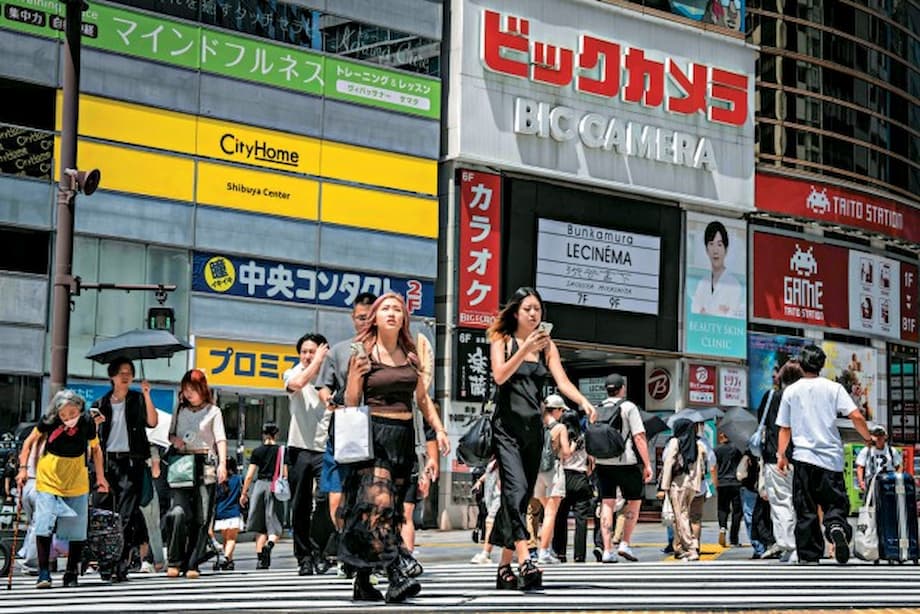Why Japan is considering a tourist card surcharge
Japan is weighing a new fee on purchases made with credit cards issued outside the country, a change that could add 1 to 3 percent to many visitor transactions. The idea has gathered momentum as domestic card companies report persistent losses when processing foreign issued Visa and Mastercard payments. Media reports in Japan and abroad say major players are studying targeted surcharges, while the government has signaled it will consult with industry and announce details in the months ahead.
- Why Japan is considering a tourist card surcharge
- What is different about foreign issued cards in Japan
- Who would set and collect any new fee
- Two tier pricing is expanding in Japan
- What a tourist card surcharge would cost the average visitor
- Timeline and what could change between now and launch
- How travelers can minimize card costs in Japan
- How Japan compares with other destinations
- What to Know
Behind the shift is a surge in inbound travel and the way global card fees are structured. Japan welcomed a record 36.87 million international visitors in 2024, and a large share of their spending is on plastic. When a traveler uses a card from an overseas bank, Japanese processors must pay network and interchange fees that are higher than those on domestic transactions. At the same time, merchant fees in Japan are low, often around 1.9 percent on average and sometimes less than 1 percent for large retailers. That imbalance is producing a widening shortfall for domestic card companies.
A survey of eight large firms reported by Nikkei and summarized by regional outlets found that six saw their deficits on foreign issued card transactions increase from a year earlier. Some companies are considering a 1 to 3 percent charge applied only to cards issued abroad. Industry analysis cited by Newsonjapan estimates the shortfall at about 70 to 80 yen per transaction and as much as 30 billion yen per year, given the scale of inbound spending.
Several paths are under review. Card companies could add a visible cardholder surcharge. Merchants could post separate prices, with a higher total when a foreign issued card is used. Or processors could adjust back end fees for specific sectors that attract heavy tourist traffic. Any approach would require coordination with global networks and clear rules so shoppers are not caught by surprise at the register.
What is different about foreign issued cards in Japan
Japan’s card market combines low merchant fees with a domestic structure that often keeps costs in check when both the card issuer and the merchant acquirer are local. That changes when a visitor pays with a card issued overseas. The Japanese acquirer must pay brand fees to Visa or Mastercard, cross border assessments, and interchange to the foreign issuer. If the merchant’s fee is very low, the processor’s outflows can exceed its income on that sale.
Example cost flow on a typical purchase
Consider a 10,000 yen purchase with a foreign issued card at a large chain that pays a 0.9 percent merchant fee. The acquirer collects 90 yen. It then pays network charges, often around 1.0 to 1.1 percent to Mastercard or Visa, plus interchange and domestic system costs. The math can leave a 70 to 80 yen deficit on that transaction, according to industry commentary carried by Newsonjapan. Multiply that by millions of purchases during peak tourism periods and the losses scale quickly.
Lowering scheme fees is difficult. Global networks publish standard rates that individual markets have limited ability to change. With the weak yen drawing more visitors and card volumes rising, domestic processors are exploring a targeted cardholder surcharge to bring foreign issued transactions back to break even.
Who would set and collect any new fee
Nikkei Asia reports that major firms including Mitsui Sumitomo Card and Mitsubishi UFJ Nicos have examined the option. That points to a measure led by the card industry rather than a national tax. The government’s role would focus on consumer protection, disclosure, and ensuring consistent application across merchants and sectors.
If implemented, the fee could appear in several ways. It might show up as a separate line when a terminal detects a card issued abroad. Some merchants could present a different total for foreign card payments. Processors could also adjust settlement amounts so that the extra cost is borne by the cardholder rather than the merchant. Any model would need to comply with network rules and domestic price display laws.
What merchants need to know
Retailers would likely need to post clear notices and train staff. Terminals would have to identify foreign issued cards reliably and apply the fee only in those cases. Many stores already handle tax free paperwork for tourists. Adding a foreign card fee would require software updates and careful procedures so residents using overseas banks are not wrongly charged.
Two tier pricing is expanding in Japan
The debate over differential pricing has become more visible as visitor numbers climb. Reporting by Tokyo Weekender highlights a range of practices. A new theme park in Okinawa lists higher prices on its English website than on its Japanese site, which requires local contact details. Tabelog, a major restaurant platform, runs separate booking systems for domestic and inbound customers, and foreign users pay a 440 yen per person system fee. Some restaurants in Tokyo have added a tourist surcharge or higher prices for visitors, citing extra staff time and higher service costs.
Supporters say that visitors do not contribute to local budgets through income taxes, that serving international customers requires added resources, and that charging everyone the same can price residents out when demand spikes. Critics worry about fairness and inconsistent criteria. Long term foreign residents sometimes get treated as tourists, fueling public backlash. Advocates call for transparent, residency based rules instead of subjective judgments at the door.
Public authorities have also introduced charges tailored to visitors in specific settings. In the Mount Fuji climbing season, prefectures approved a 4,000 yen trail entry fee in 2025 to manage crowding and safety. Natsuko Sodeyama, a Shizuoka prefecture official, explained the scale of the challenge and the need for controls.
“There is no other mountain in Japan that attracts that many people in the span of just over two months,” Sodeyama said. “So some restrictions are necessary to ensure their safety.”
A foreign card surcharge would be a private sector change rather than a public access fee, yet both reflect the same pressure point, intense visitor demand that raises costs for local systems.
What a tourist card surcharge would cost the average visitor
Reports point to a range between 1 and 3 percent. On a 20,000 yen restaurant bill, that would add 200 to 600 yen. On 100,000 yen of shopping, the fee would come to 1,000 to 3,000 yen. Some travelers will feel more than that. Many banks add a foreign transaction fee of about 3 percent unless a traveler uses a fee free card. If both charges apply, the combined hit can reach 4 to 6 percent of the purchase amount.
There is another potential extra cost known as dynamic currency conversion. A terminal or website may offer to charge you in your home currency rather than yen. The exchange rate provided in that case usually adds a few percentage points over your bank’s rate. Choosing to pay in yen typically produces a better result.
Japan does provide savings in other areas. Many retail purchases are available tax free for tourists who show a passport and meet spending thresholds, which removes the 10 percent consumption tax. Even with a card surcharge, the final bill for eligible goods can still be lower than the resident price once the tax is taken off.
Timeline and what could change between now and launch
The idea is still under review. Government officials have indicated that consultations with card companies and merchants will take place in the coming months. Technical and legal details matter. Companies must settle how a terminal identifies a foreign issued card, how any fee is displayed, how refunds and chargebacks are handled, and how the fee interacts with tax free sales. Global networks will weigh in on disclosure standards and consumer protections.
A phased rollout is possible. Card companies could start in sectors where losses are largest, such as big box retailers with very low merchant fees, or in areas with heavy tourist flows. Pilot programs in select cities could come before a wider expansion. The broad aim is to align costs with users while keeping the system simple enough that visitors understand what they will pay.
How travelers can minimize card costs in Japan
Travelers do not need to abandon cards. A few adjustments can reduce costs if a foreign card surcharge is introduced.
- Carry a credit card with no foreign transaction fees for purchases. Many banks issue travel focused cards that waive the usual 3 percent fee.
- Avoid using a credit card for cash withdrawals. Cash advances often start accruing interest immediately and include separate cash advance fees. Use a travel debit card or a prepaid travel card instead.
- Decline dynamic currency conversion and choose to pay in yen. Your bank’s exchange rate is usually better than a merchant’s converted rate.
- Have some cash on hand for small purchases. ATMs at 7 Eleven and Japan Post Bank tend to work with many foreign cards. Check your bank’s international ATM partners to reduce fees.
- Use transit IC cards like Suica or Pasmo for convenience store items and transport. Visitors often need cash to top up physical IC cards. Mobile top ups and auto charge features are limited for non residents or specific phones.
- Keep receipts if a foreign card fee appears. If you live in Japan and use an overseas bank card, watch for mistaken application and raise it with the merchant or your card company.
- Take advantage of tax free shopping where eligible. Present your passport and follow store instructions to remove the 10 percent consumption tax on qualifying goods.
Even outside tourism, Japanese authorities note that foreign cards can incur extra costs in their own systems. The Ministry of Foreign Affairs highlights this in guidance for its online consular payments.
Exchange fees may be charged for credit cards issued outside Japan.
How Japan compares with other destinations
Visitor fees are common worldwide. Authorities use them to manage crowds and fund upkeep. Recent examples cited by international outlets include Bhutan’s daily sustainable development fee, New Zealand’s international visitor levy, Bali’s tourism tax, Thailand’s entry fee for air arrivals, Venice’s day charge for peak dates, and higher prices at iconic sites such as Machu Picchu. Those are public fees, not card surcharges, but the logic is similar. Visitors pay a portion of the extra costs they generate.
If Japan’s card industry adopts a foreign card surcharge, it would be a distinct approach focused on payment infrastructure rather than entry gates. The scale of adoption, clarity of notices at the point of sale, and the availability of fee free payment options will determine how travelers experience it.
What to Know
- Major Japanese card companies are studying a surcharge of about 1 to 3 percent on foreign issued credit card payments.
- Domestic processors say they lose money on these transactions because network and interchange fees exceed low merchant fees in Japan.
- Industry estimates put the shortfall near 70 to 80 yen per transaction and up to 30 billion yen per year in total.
- The measure would be industry led, with the government expected to set disclosure and consumer protection rules.
- If introduced, the fee would apply only to cards issued abroad, not to Japanese cards.
- Travelers can reduce costs by using fee free cards, avoiding cash advances, paying in yen, and using tax free shopping.
- A phased rollout is possible, starting in sectors with heavy tourist traffic and very low merchant fees.




